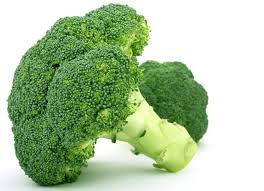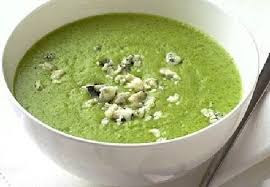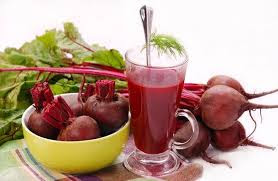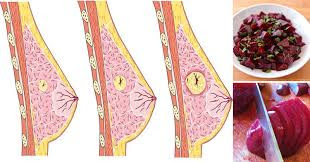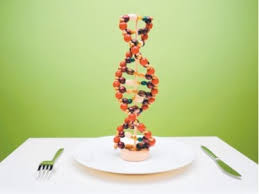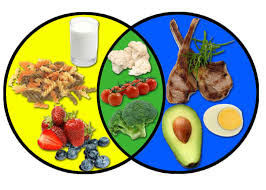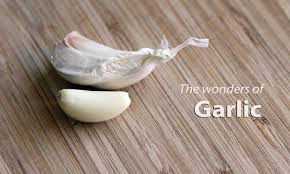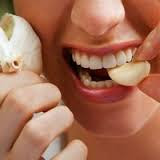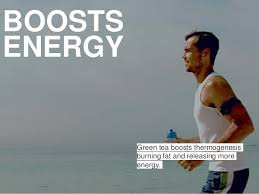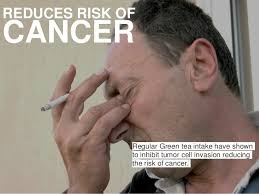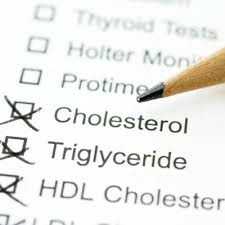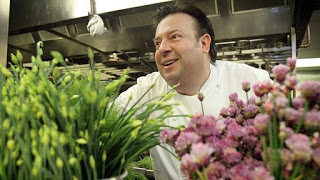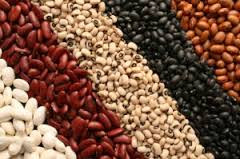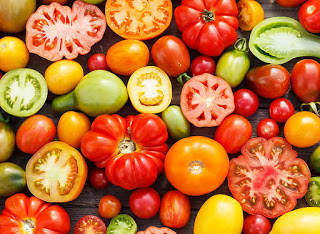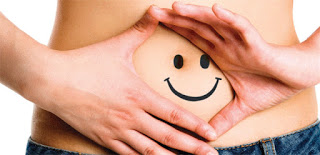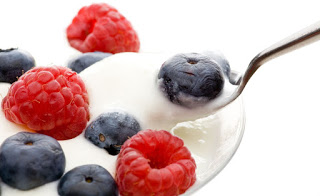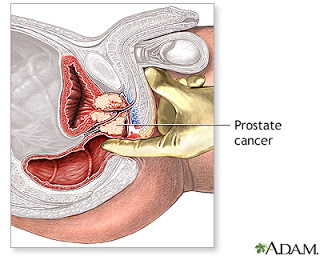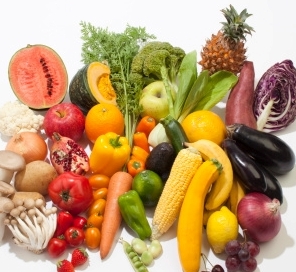I had cause to encounter this spongy vegetable recently. Well, I had seen it a lot in the movies and it didn’t leave a good impression. Managed to see it in a vegetable market in Jos and bought it. Funny enough it tasted quite pleasant and rich!.. I went ahead to find out its health benefits and here’s what I found.. Enjoy!
Improving bone health:
Poor vitamin K intake is linked with a high risk of bone fracture. Just one cup of chopped broccoli provides 92 micrograms of vitamin K, well over 100% of your daily need. Consuming an adequate amount of vitamin K daily, improves bone health by improving calcium absorption and reducing urinary excretion of calcium. Broccoli also contributes to your daily need for calcium, providing 43 milligrams in one cup. Antioxidant vitamin C, when eaten in its natural form (in fresh produce as opposed to supplement form) can help to fight skin damage caused by the sun and pollution, reduce wrinkles and improve overall skin texture.
Protection from chronic disease:
According to theDepartment of Internal Medicine and Nutritional Sciences Program of the University of Kentucky, high fiber intakes are associated with significantly lower risks of developingcoronary heart disease, stroke, hypertension, diabetes, obesity, and certain gastrointestinal diseases.
Increased fiber intake has also been shown to lower blood pressure and cholesterol levels, improve. insulin sensitivity, and enhance weight loss for obese individuals.
Fighting cancer:
Eating a high amount of cruciferous vegetables has been associated with a lower risk of cancer; namely lung andcolon cancer. Studies have suggested that sulforaphane, the sulfur-containing compound that gives cruciferous vegetables their bitter bite, is also what gives them their cancer-fighting power. Researchers have found that sulforaphane can inhibit the enzyme histone deacetylase (HDAC), known to be involved in the progression of cancer cells. The ability to stop HDAC enzymes could make sulforaphane-containing foods a potentially powerful part of cancer treatment in the future. Sulforaphane is now being studied for its ability to delay or impede cancer with promising results shown inmelanoma, esophageal, prostate andpancreatic cancers.Another important vitamin that broccoli contains,folate, has been shown to decrease the risk of breast cancer in women. Adequate intake of dietary folate (in food) has also shown promise in protecting against colon, stomach, pancreatic and cervical cancers. Although the mechanism of protection is currently unknown, researchers believe that folate’s protective effects have something to do with its role in DNA and RNA production and the prevention of unwanted mutations. There is no evidence that folate in supplement form provides the same anti-cancer benefits.
Broccoli’s Anti-Inflammatory Benefits:
When threatened with dangerous levels of potential toxins, or dangerous numbers of overly-reactive, oxygen-containing molecules, signals are sent within our body to our inflammatory system, directing it to “kick in” and help protect our body from potential damage. One key signaling device is a molecule called Nf-kappaB. When faced with the type of dangers described above, the NF-kappaB signaling system is used to “rev up” our inflammatory response and increase production of inflammatory components (for example, IL-6, IL-1beta, TNF-alpha, iNOS and COX-2). This process works beautifully in temporary, short-term circumstances when healing from injury is required. When it continues indefinitely at a constant pace, however, it can put us at risk for serious health problems, including the development of cancer.
Research studies have made it clear that the NF-kappaB signaling system that is used to “rev up” our inflammatory response can be significantly suppressed by isothiocyanates (ITCs). ITCs—the compounds made from glucosinolates found in broccoli and other cruciferous vegetables—actually help to shut down the genetic machinery used to produce NF-kappaB and other components of the inflammatory system. These anti-inflammatory benefits of ITCs have been demonstrated in the laboratory, and with consumption of the ITCs themselves. While they have yet to be demonstrated on consumption of broccoli in an everyday diet, we fully expect future research to show anti-inflammatory benefits from the routine consumption of broccoli (and its glucosinolates), not just from consumption of ITCs.
As mentioned earlier in this section, chronic inflammation can sometimes get triggered by overexposure to allergy-related substances. In this context, broccoli has yet another anti-inflammatory trick up its sleeve, because it is a rich source of one particular phytonutrient (a flavonol) called kaempferol. Especially inside of our digestive tract, kaempferol has the ability to lessen the impact of allergy-related substances (by lowering the immune system’s production of IgE-antibodies). By lessening the impact of allergy-related substances, the kaempferol in broccoli can help lower our risk of chronic inflammation.
Broccoli’s Antioxidant Benefits:
Amongst all of the commonly consumed cruciferous vegetables, broccoli stands out as the most concentrated source of a premiere antioxidant nutrient—vitamin C. This central antioxidant vitamin can provide longer-term support of oxygen metabolism in the body if it is accompanied by flavonoids that allow it to recycle. Broccoli provides many such flavonoids in significant amounts, including the flavonoids kaempferol and quercitin. Also concentrated in broccoli are the carotenoids lutein, zeaxanthin, and beta-carotene. All three of these carotenoids function as key antioxidants. In the case of lutein and beta-carotene, broccoli has been shown not only to provide significant amounts of these antioxidants but to significantly increase their blood levels when consumed in the amount of three cups. Other antioxidants provided by broccoli in beneficial amounts include vitamin E and the minerals manganese and zinc.
Considered as a group, the vitamins, minerals, flavonoids, and carotenoids contained in broccoli work to lower risk of oxidative stress in the body. The ability of these nutrients to support oxygen metabolism and avoid excess formation of overly reactive, oxygen-containing molecules makes them equally helpful in lowering risk of chronic inflammation and risk of cancer. If cancer development is compared to a 3-legged stool, the antioxidant benefits of broccoli can be viewed as weakening one leg of the stool, namely the leg called “oxidative stress.” We’ve already seen how the glucosinolates and omega-3 fats in broccoli can be viewed as helping to weaken a second leg of the stool (chronic inflammation).
Enhancing Detoxification:
Most toxins that pose a risk to our cells must be detoxified in our body by a 2-step process. What’s remarkable about broccoli is its ability to alter activity in both of these two detox steps. Isothiocyanates (ITCs) made from the glucosinolates in broccoli are well-documented modifiers of the first step in detoxification (called Phase I). In fact, some ITCs like sulforaphane can actually help shut down the genetic machinery that produces certain Phase I enzymes. ITCs are equally capable of altering the activity of enzymes involved in the second step of detoxification (called Phase II). From research in the field of genetics, we know that ITCs can help bridge gaps in Phase II activity when it is insufficient. Taken in combination, the impact of ITCs on Phase I and II detox events is unique—and equally unique is the presence of glucosinolate compounds in broccoli that can be used to make ITCs. Glucosinolates like glucoraphanin, gluconasturtiian, and glucobrassicin are simply not found in other foods in the same combination and concentration that is offered by broccoli. By helping to promote as well as regulate detox activity in our cells, the ITCs made from broccoli can help prevent insufficient detoxification of dangerous substances that threaten our cells.
Broccoli has a strong, positive impact on our body’s detoxification system, and researchers have recently identified one of the key reasons for this detox benefit. Glucoraphanin, gluconasturtiian, and glucobrassicin are 3 glucosinolate phytonutrients found in a special combination in broccoli. This dynamic trio is able to support all steps in body’s detox process, including activation, neutralization, and elimination of unwanted contaminants. Isothiocyanates (ITCs) are the detox-regulating molecules made from broccoli’s glucosinolates, and they help control the detox process at a genetic level.
Broccoli and Digestive Support
The digestive support provided by broccoli falls into two basic categories: fiber support, and ITC (isothiocyanate) support. At approximately 1 gram of dietary fiber for every 10 calories, you don’t have to eat much broccoli to get a large amount of your daily requirement! For 100 calories—only 5% of a 2,000-calorie diet—you get about 10 grams of fiber, or 40% of the Daily Value (DV). And, 250 calories of broccoli (about 12% of a 2,000-calorie diet) will give you the full daily requirement for this important nutrient! Few components of food support our digestive system as well as fiber. The speed that food travels through us, the consistency of food as it moves through our intestine, and bacterial populations in our intestine are all supported as well as regulated by dietary fiber.
Alongside of broccoli’s dietary fibers are its glucosinolates. These phytonutrients are converted by our bodies into isothiocyanates (ITCs). ITCs—and particularly sulforaphane—help protect the health of our stomach lining by helping prevent bacterial overgrowth of Helicobacter pylori or too much clinging by this bacterium to our stomach wall. Broccoli sprouts appear to have especially strong stomach support properties in this regard.
Broccoli and Cardiovascular Support
Although research in this area is still in the early stages, anti-inflammatory substances found in cruciferous vegetables are becoming the topic of increasing interest with respect to heart disease. One particular focus here involves the anti-inflammatory properties of sulforaphane, one of the isothiocyanates (ITCs) derived from the glucoraphanin in broccoli. In some individuals susceptible to high blood sugar, sulforaphane may be able to prevent (or even reverse) some of the damage to blood vessel linings that can be cause by chronic blood sugar problems. Decreased risk of heart attacks and strokes may also eventually be linked in a statistically significant way to intake of broccoli and its glucoraphanin.
(adsbygoogle = window.adsbygoogle || []).push({});
A second area you can count on broccoli for cardiovascular support involves its cholesterol-lowering ability. Our liver uses cholesterol as a basic building block to product bile acids. Bile acids are specialized molecules that aid in the digestion and absorption of fat through a process called emulsification. These molecules are typically stored in fluid form in our gall bladder, and when we eat a fat-containing meal, they get released into the intestine where they help ready the fat for interaction with enzymes and eventual absorption up into the body. When we eat broccoli, fiber-related nutrients in this cruciferous vegetable bind together with some of the bile acids in the intestine in such a way that they simply stay inside the intestine and pass out of our body in a bowel movement, rather than getting absorbed along with the fat they have emulsified. When this happens, our liver needs to replace the lost bile acids by drawing upon our existing supply of cholesterol, and as a result, our cholesterol level drops down. Broccoli provides us with this cholesterol-lowering benefit whether it is raw or cooked. However, a recent study has shown that the cholesterol-lowering ability of raw broccoli improves significantly when it is steamed. In fact, when the cholesterol-lowering ability of steamed broccoli was compared with the cholesterol-lowering ability of the prescription drug cholestyramine (a medication that is taken for the purpose of lowering cholesterol), broccoli bound 33% as many bile acids (based on a standard of comparison involving total dietary fiber).
The B-complex vitamins in broccoli can also make a major contribution to our cardiovascular health. Especially with respect to excessive formation of homocysteine—an event which raises our risk of atherosclerosis, stroke, and heart attack—B-complex vitamin deficiency intake can pose a major risk. Three B vitamins especially important for lowering our risk of hyperhomocysteinemia (excessive formation of homocysteine) are vitamin B6, vitamin B12, and folate. By making an important contribution to our B6 and folate intake, broccoli can help us lower our risk of excessive homocysteine formation and cardiovascular problems that are related to excess homocysteine.
Other Health Benefits Provided by Broccoli:
Three other areas of health benefits are important to mention when considering broccoli and its unique combination of nutrients. The first area is eye health. Two carotenoids found in significant concentrations in broccoli—lutein and zeaxanthin—play an especially important role in the health of the eye. In fact, no tissue in the body is more concentrated with lutein than the area in the outer portion of the retina (called the peripheral retina). Similarly, in the macula near the central portion of the retina, zeaxanthin is uniquely concentrated. Risk of problems involving the macula of the eye (for example, macular degeneration) and problems involving the lens area of the eye (for example, cataracts) have both been show to lessen with intake of foods (including broccoli) that provide significant amounts of the lutein and zeaxanthin carotenonids.
A second area is skin support, including support of sun-damaged skin. Here it is the glucoraphanin found in broccoli—converted into sulforaphane by the body—that has received the most research attention. Since skin cells can carry out the process of detoxification, it may be detox-related benefits of sulforaphane that are especially important in helping to counteract sun damage.
A third area of increasing research interest involves the metabolism of vitamin D. Broccoli is not a source of this vitamin, but it is an excellent source of vitamin K and also of vitamin A (in one of its precursor forms, beta-carotene). Many individuals have large vitamin D deficiencies that cannot be remedied through diet alone, and these deficiencies require sizable amounts of vitamin D to be provided through dietary supplementation. When large supplemental doses of vitamin D are needed to offset deficiency, ample supplies of vitamin K and vitamin A appear to help keep our vitamin D metabolism in the proper balance. Assuring adequate intake of vitamins K and A alongside of vitamin D supplementation may turn out to be important in achieving optimal vitamin D supplementation results and avoiding potential problems related to supplementation. Broccoli may turn out to play a particularly helpful role in balancing this set of events by providing its unusually strong combination of both vitamin A and vitamin K.
Broccoli as a “Goitrogenic” Food
Broccoli is sometimes referred to as a “goitrogenic” food. Yet, contrary to popular belief, according to the latest studies, foods themselves—broccoli included—are not “goitrogenic” in the sense of causing goiter whenever they are consumed, or even when they are consumed in excess. In fact, most foods that are commonly called “goitrogenic”—such as the cruciferous vegetables (including broccoli, kale, and cauliflower) and soyfoods—do not interfere with thyroid function in healthy persons even when they are consumed on a daily basis. Nor is it scientifically correct to say that foods “contain goitrogens,” at least not if you are thinking about goitrogens as a category of substances like proteins, carbohydrates, or vitamins. With respect to the health of our thyroid gland, all that can be contained in a food are nutrients that provide us with a variety of health benefits but which, under certain circumstances, can also interfere with thyroid function. The term “goitrogenic food” makes it sound as if something is wrong with the food, but that is simply not the case. What causes problems for certain individuals is not the food itself but the mismatched nature of certain substances within the food to their unique health circumstances.
Possible health risks of consuming broccoli
If you are taking blood-thinners such as Coumadin (warfarin), it is important that you do not suddenly begin to eat more or less foods containing vitamin K, which plays a large role in blood clotting.
It is the total diet or overall eating pattern that is most important in disease prevention and achieving good health. It is better to eat a diet with a variety than to concentrate on individual foods as the key to good health.
Some Sources:
Ambrosone CB, Tang L. Cruciferous vegetable intake and cancer prevention: role of nutrigenetics. Cancer Prev Res (Phila Pa). 2009 Apr;2(4):298-300. 2009.
Angeloni C, Leoncini E, Malaguti M, et al. Modulation of phase II enzymes by sulforaphane: implications for its cardioprotective potential. J Agric Food Chem. 2009 Jun 24;57(12):5615-22. 2009.
Banerjee S, Wang Z, Kong D, et al. 3,3′-Diindolylmethane enhances chemosensitivity of multiple chemotherapeutic agents in pancreatic cancer. 3,3′-Diindolylmethane enhances chemosensitivity of multiple chemotherapeutic agents in pancreatic cancer. 2009.
Bhattacharya A, Tang L, Li Y, et al. Inhibition of bladder cancer development by allyl isothiocyanate. Carcinogenesis. 2010 Feb;31(2):281-6. 2010.
http://articles.mercola.com/sites/articles/archive/2013/11/09/broccoli-benefits.aspx

